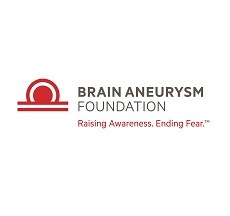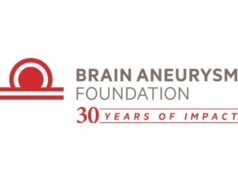 The Brain Aneurysm Foundation (BAF) has announced the launch of ‘Stop the Pop’—a new campaign intended to increase awareness of the prevalence and impact of brain aneurysms, and the need for ongoing investment to fund new innovations, screening, and treatment.
The Brain Aneurysm Foundation (BAF) has announced the launch of ‘Stop the Pop’—a new campaign intended to increase awareness of the prevalence and impact of brain aneurysms, and the need for ongoing investment to fund new innovations, screening, and treatment.
It is estimated that one in 50 people in the USA have a brain aneurysm, with more than 30,000 people suffering from ruptures annually, of which half are fatal, according to a recent BAF press release. Studies also show that 1–4% of all people who go to the emergency room for a severe headache in fact have a ruptured aneurysm—though approximately 25% of those patients will be misdiagnosed or have a delayed diagnosis.
As such, the Stop the Pop campaign aims to build awareness of symptoms, and genetic and environmental risk factors, and to increase research funding to better understand the underlying causes of the condition and to advance new treatments. The campaign includes social media, online and physical advertising, as well as upcoming events in cities across the USA including Boston, New York, Chicago and St Louis.
“A feeling that something has ‘popped’ is what we hear most from patients who have experienced a rupture,” said Christopher Ogilvy (Beth Israel Deaconess Medical Center, Boston, USA), who leads the BAF medical advisory board. “Many write it off as an intense headache, but it also comes with an array of other symptoms [including] blurred vision, nausea, or even seizure, and it is critical people recognise the seriousness of what they may be experiencing and immediately seek treatment. Our focus is to help individuals at risk, and the first responders and physicians who treat them, to better recognise aneurysms and initiate earlier interventions in order to reduce the number of people afflicted by this often-treatable condition.”
While brain aneurysms are most prevalent in people aged 35–60 years, they can also occur in children, the BAF release continues. Women over the age of 55 years have a higher risk of brain aneurysm rupture than men and are generally at greater risk too. Ruptured aneurysms are also seen at higher rates in African American populations. Other known risk factors include smoking, high blood pressure, family history, and diseases including Ehlers-Danlos syndrome, autosomal dominant polycystic kidney disease, Marfan syndrome and fibromuscular dysplasia.
The majority of funds raised by the BAF are used to provide grants to academic researchers studying the underlying biology of aneurysms or developing new treatment methods. And, according to the BAF, federal financial support for brain aneurysm research amounts to just over US$2 for every person afflicted—and advocating for increased funding is “a cornerstone” of the BAF’s mission.
Today, as a result of the foundation’s own fundraising initiatives, there are dozens of ongoing research efforts at academic institutions across the USA and, later this month, the BAF will announce 17 new grants at its annual research grant symposium (21 September, Charleston, USA).
“The Stop the Pop campaign furthers our mission of promoting early detection of brain aneurysms by raising awareness of the signs, symptoms, and risk factors,” said BAF executive director Christine Buckley. “We are excited by the continued advances in the field but know that far more needs to be done. We are pleased with the support of so many survivors, the families of those who have lost loved ones, and those in the medical community who work tirelessly to reverse these preventable tragedies.”










